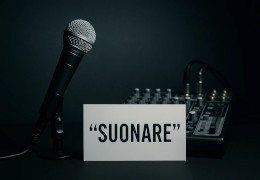When Minimalism Speaks Louder: Why “Skinny Love” Endures and Today’s Hits Fade Away
“Skinny Love” is almost nothing — and that’s exactly why it becomes everything. A fragile voice, a bare acoustic guitar, and tiny breathing details. The arrangement leaves room for silence; dynamics aren’t afraid of imperfection, and that trembling voice feels like a whisper in your ear. It’s minimalism, yes, but full of meaning: every element has a purpose, and nothing screams for attention.
On the other side stands a typical playlist-era viral hit — two minutes long, maybe less; no intro, chorus within a few seconds, flattened verse, heavy autotune, a kick that never stops, and a drop engineered for looping. It’s music designed like an animated banner: it grabs attention, but doesn’t deserve it.
What “Skinny Love” Does
- Honest structure: it doesn’t rush to the chorus at second 8 — it lets you enter the room, then it speaks.
- Alive dynamics: no loudness wall. You can feel when the voice leans in and when it yields.
- Imperfect timbre: the creak of strings, the breath, the cracked note — human, therefore believable.
- Sparse harmony: few notes chosen to serve the lyric. Minimalism as subtraction, not scarcity.
What the Average Viral Hit Does
- Hook-first design: chorus upfront, fearing the skip.
- Aggressive compression: everything loud, always. Dynamics die, the ear gets tired.
- Permanent autotune: not an aesthetic choice, but a crutch.
- Interchangeable sounds: stock presets, recycled progressions, predictable drops.
The “More = Better” Illusion
Recent years have confused sonic fullness with emotional richness. Layers, reverbs, ad-libs, sidechains, and piles of ear candy. But abundance does not replace intention. When everything is foreground, nothing truly is.
“Skinny Love” does the opposite: it removes. And when you remove, what remains matters.
Attention as a Production Metric
- Almost no intro: the song starts by selling itself — there’s no “before.”
- Chorus as slogan: memeable micro-lines, sacrificing imagery and subtext.
- Short duration: repeatability > depth. The goal is replay, not memory.
- Hot mastering: high LUFS, crushed transients: guaranteed ear fatigue.
Autotune: Too Much Perfume
Autotune is legitimate. But when it becomes paint over everything, the ear stops perceiving the human gesture: slides, expressive micro-detuning, the vowel that trembles on the right word. In “Skinny Love,” that fragility is the message. In the average viral hit, the polish is the message: a showroom with no object.
Lyrics: Imagery vs Slogans
- “Skinny Love”: images, subtext, the unsaid — short-form literature.
- Viral hit: slogans and emotional call-to-actions — catchy advertising.
The issue isn’t simplicity; it’s simplification. The former is clarity; the latter is emptiness.
Why Minimalism Wins (When It’s True)
Minimalism isn’t doing less; it’s choosing well. It requires trust — in the song, in silence, in the listener. Remove the unnecessary and what remains looks you in the eye. The listener feels it.
What Really Broke
- The time-attention pact: music must convince in seven seconds, so we write for seven seconds.
- Emotional dynamics: flattened by the “always loud, everywhere” demand.
- Imperfection as value: banned — yet goosebumps live there.
- Intention: songs built for use (scrolls, trends), not for meaning.
- The preset industry: same loops, same drum kits, same space design.
Practical Epilogue
- Start from the lyric and breath: if it can’t stand alone, no arrangement will save it.
- Leave one more pocket of silence: it’s often the most musical thing you can “add.”
- Use autotune as an expressive choice, not as sandpaper.
- Pick one meaningful sound instead of ten fillers.
- Don’t write for the skip — write for the second listen.
Glossary — Production & Listening
Dynamics
Difference between the quietest and loudest parts.
Examples: Bon Iver “Skinny Love”; Nirvana “Something in the Way”.
Compression
Reduces level differences to control peaks.
Examples: Daft Punk “Get Lucky”; Adele “Hello”.
RMS Compression
Controls perceived average loudness over time.
Example: The Weeknd “Blinding Lights”.
Peak Compression
Targets instant signal spikes.
Example: Foo Fighters “The Pretender”.
Limiter
Prevents peaks beyond a set threshold.
Example: Muse “Uprising”.
Dynamic Range
Span between the quietest and loudest sound.
Example: Dire Straits “Brothers in Arms”.
Loudness War
The race to master tracks louder at the cost of depth.
Example: Metallica “Death Magnetic”.
LUFS
Standard unit for perceived loudness.
Example: Billie Eilish “bad guy”.
Headroom
Safety margin before distortion.
Example: Radiohead “Daydreaming”.
Autotune
Automatic or stylized pitch correction.
Examples: Cher “Believe”; Travis Scott (stylistic use).
Pitch Correction
Subtle tuning for natural vocals.
Example: Taylor Swift (recent ballads).
Sidechain Compression
One sound ducks another for pulse/clarity.
Examples: Daft Punk “One More Time”; Avicii “Levels”.
Transients
The fast attack portion of a sound.
Example: AC/DC “Back In Black”.
Equalization (EQ)
Balances low/mid/high frequencies.
Example: Fleetwood Mac “Dreams”.
Preset
Pre-configured synth/effect setting.
Example: Generic synth-pop pads/leads.
Hook
Catchy melodic/lyrical phrase.
Examples: Coldplay “Viva la Vida”; Lady Gaga “Poker Face”.
Bridge
Transitional/contrasting section.
Example: John Mayer “Slow Dancing in a Burning Room”.
Mastering
Final step for cohesion and translation.
Example: Daft Punk “Random Access Memories”.
Mixing
Combining and balancing all tracks.
Example: Michael Jackson “Billie Jean”.
Stereo Image
Perceived left–right and depth.
Example: Pink Floyd “Time”.
Reverb
Simulated acoustic ambience.
Example: U2 “With or Without You”.
Delay
Controlled echo, rhythmic or ambient.
Example: U2 “Where The Streets Have No Name”.
Distortion / Saturation
Added harmonics for warmth/grit.
Examples: The Black Keys “Lonely Boy”; Beatles “Revolution”.
Timbre
Tonal color distinguishing sounds.
Example: Amy Winehouse “Back to Black”.
Stereo Width
Perceived wideness of the field.
Example: Massive Attack “Teardrop”.
Overproduction
Too many layers hiding emotion.
Example: Stripped demo vs overproduced release.
Flat Mix
Over-compressed mix lacking contrast.
Examples: Many EDM/pop hits of the 2010s.
Musical Minimalism
Few elements chosen with precision.
Examples: Bon Iver “Skinny Love”; Leonard Cohen “Famous Blue Raincoat”.
Loudness Normalization
Automatic streaming volume alignment.
Example: Compare Spotify vs local playback.
Mix Bus / Master Bus
The final output channel of the mix.
Example: The War On Drugs “Under the Pressure”.
Ear Candy
Small production details that grab attention.
Example: Pharrell Williams “Happy”.
Hi-hat / Snare / Kick
Core elements of a drum kit.
Example: Travis Scott “SICKO MODE”.
Sample / Loop
Pre-recorded sound fragment reused.
Examples: Massive Attack “Angel”; Moby “Natural Blues”.
Overdrive / Clipping
Signal saturation leading to distortion.
Examples: The Strokes “Last Nite”; lo-fi hip-hop textures.
Frequently Asked Questions
What is musical minimalism?
An approach based on subtraction: a few, well-chosen elements, living dynamics, and space between sounds to increase emotional impact.
Why do many modern songs sound “the same”?
Heavy reliance on presets, autotune, and aggressive compression reduces timbral variety and dynamic range, optimizing for skip/loop rather than full listening.
What makes “Skinny Love” different from an average viral hit?
Honest structure, expressive imperfections, unflattened dynamics, and a sparse arrangement that lets lyrics and timbre breathe.





















